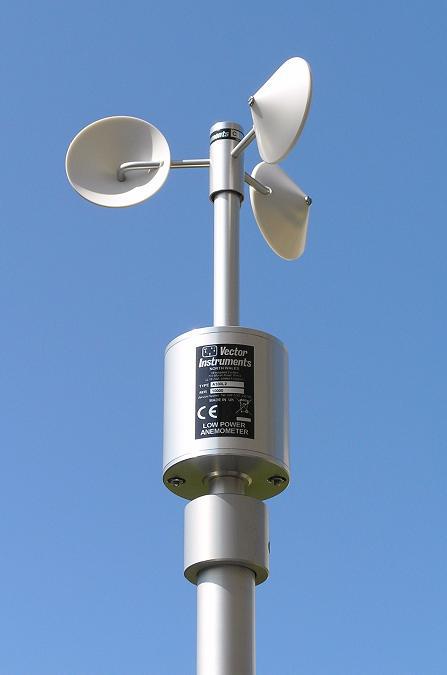Understanding Various Types of Anemometers for Different Applications
Understanding Various Types of Anemometers for Different Applications
Blog Article
All You Required to Understand About Anemometers: Just How They Function, Why They Matter, and Where to Utilize Them
Anemometers, though typically ignored in the world of clinical tools, play a vital duty in numerous fields, providing valuable insights right into wind speed and airflow patterns. As we dive into the details of anemometer technology, we will reveal the internal workings of these devices, their significance, and the key factors to consider when choosing the appropriate anemometer for details applications.

Anemometer Basics
A crucial instrument made use of to determine wind rate and instructions, the anemometer plays an essential function in weather forecasting and different markets. An anemometer usually is composed of 3 or four mugs that turn in the wind, a vane that directs right into the wind, and sensing units to track the motions or turnings.
There are various sorts of anemometers readily available, consisting of cup anemometers, vane anemometers, hot-wire anemometers, and sonic anemometers, each with its unique functions and applications. Cup anemometers are typically used for fundamental wind rate dimensions, while vane anemometers are preferred for directional measurements. Hot-wire anemometers are appropriate for reduced airspeeds, and sonic anemometers are perfect for high-precision dimensions in research study and industrial setups. Understanding the essentials of anemometers is important for exact wind data collection and analysis across different fields.
Concepts of Anemometer Procedure
Building on the foundational understanding of anemometer essentials, the concepts of anemometer operation clarify the technicians behind wind rate and direction dimensions. Cup anemometers, for instance, have 3 or more mugs that capture the wind, triggering them to rotate much faster as the wind speed rises. Hot-wire anemometers count on a heated cord that cools down as wind passes over it, with the rate of cooling establishing the wind rate.
Relevance of Anemometers
The value of anemometers in meteorology and various sectors can not be overstated. Anemometers play a crucial function in gauging wind speed and direction, offering crucial information for climate forecasting, environment researches, ecological surveillance, and aviation procedures. Meteorologists depend on anemometers to gather accurate wind data, helping them comprehend climate patterns, predict storms, and problem timely warnings to the public. In industries such as building, farming, renewable power, and maritime procedures, anemometers are used to enhance processes, ensure safety and security, and increase effectiveness. As an example, wind farm drivers make use of anemometers to evaluate wind problems and make best use of electrical power production from wind turbines. In the maritime sector, anemometers help ship navigating by supplying real-time wind info to captains, assisting them make informed choices to make certain risk-free trips. Overall, anemometers are important tools that add significantly to safety and security, efficiency, and educated decision-making in meteorology and a vast array of markets.
Applications Across Different Industries
In the eco-friendly energy field, anemometers play a critical function in examining wind problems for wind ranch placements, making sure optimum power manufacturing. Industries like building and mining use anemometers to monitor wind speeds, vital for safety protocols, specifically when working at heights or in open-pit mines where strong winds can present risks. In farming, anemometers aid farmers in taking care of plant spraying by providing real-time information on wind speed to avoid drift.

Choosing the Right Anemometer for Your Demands
Picking the appropriate anemometer customized to your certain demands is necessary for acquiring precise wind speed and instructions measurements. When picking an anemometer, take into consideration elements such as the intended application, required dimension array, environmental problems, and preferred attributes. For basic purposes, a cup anemometer is ideal for determining wind speed, while a vane anemometer provides wind recommended you read instructions information. Hot-wire anemometers are suitable for low airspeed measurements, and ultrasonic anemometers offer high precision and longevity.

Conclusion
To conclude, anemometers play a vital function in measuring wind speed and instructions throughout different markets. Comprehending the concepts of anemometer operation is vital for choosing the best tool for certain demands. From weather forecasting to aeronautics, anemometers are important tools for making certain and accumulating exact data you could look here safety in various applications. It is necessary to take into consideration the value of anemometers in order to make enlightened decisions when picking one of the most ideal device for gauging wind conditions.
There are numerous kinds of anemometers readily available, including cup anemometers, vane anemometers, hot-wire anemometers, and sonic anemometers, each with its distinct attributes and applications. Cup click to find out more anemometers are typically used for basic wind rate dimensions, while vane anemometers are preferred for directional measurements. Hot-wire anemometers are appropriate for reduced airspeeds, and sonic anemometers are perfect for high-precision measurements in research study and industrial settings.Building on the fundamental understanding of anemometer fundamentals, the principles of anemometer procedure clarify the mechanics behind wind rate and instructions measurements. For basic objectives, a cup anemometer is appropriate for measuring wind speed, while a vane anemometer supplies wind instructions information.
Report this page